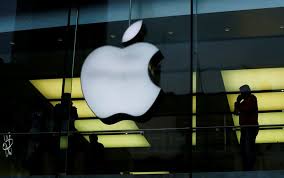Apple Card vs. American Express Platinum: A High-End Credit Card Face-Off

Apple Card is coming this summer. And when it’s released, don’t be surprised if some industry watchers compare it to a variety of high-end credit cards including the American Express Platinum.
The tech giant unveiled the credit card during its otherwise star-studded Hollywood upfront-like event last week. While the Apple Card will allow users to make purchases anywhere MasterCard is accepted, it’s also quite unlike many other cards available today.
Apple Card doesn’t have late fees, annual fees, international fees, or over-limit fees. And although users will be encouraged to pay their monthly statements, technically, if you want to skip a month, you can. Just be ready to pay extra interest.
For its part, Apple has called its credit card revolutionary and suggested it could upend the industry. But it’s also entering a market that’s dominated by companies including Visa, Chase, American Express, and others, that have the credit card game down to a science.
“Apple is starting from the bottom of base camp in what looks to be a climb of Mt. Everest to gain 5% to 7% market share over the next few years,” Wedbush analyst Dan Ives told Fortune in an interview. “The stage is set, now it’s about will consumers sign onto the platform and use the Apple Card over the coming years.”
Ives went on to say that Apple’s clear opportunity is “tapping into its 1.4 billion active iOS devices and monetizing the financial vertical.” He believes the company could attract 20 million Apple Card customers in its first three years.
But before it can get there, Apple Card needs to intrigue users. As a metal card with plenty of incentives for using it, I can’t help but compare it to the American Express Platinum—a similarly high-end metal card with its own slate of perks that some may find compelling.
So, to shed some light on where Apple Card might fit in the market, I’ve compared the Apple Card and American Express Platinum below.
From design to interest, here’s a look at how the two cards compare:
Design
Apple Card and American Express Platinum are clearly vying for metal credit card dominance.
Apple Card has a titanium design and laser-etched Apple logo and cardholder name. There’s a security chip in the card, but no credit card number, CVV, or any other information.
The American Express Platinum is a metal card that features American Express’ logo and border and uses the same security chip in the Apple Card. Unlike the Apple Card, the American Express Platinum displays credit card number, expiration date, and CVV numbers in addition to the cardholder’s name.
Fees
Apple created some buzz when it said that cardholders won’t be subject to annual fees, international usage fees, over-limit charges, and even late fees.
American Express Platinum, on the other hand, is quite different. Cardholders are charged a $ 550 annual fee for having the card and up to $ 38 for both late payments and returned payments. And if cardholders want to add cards to their account for family members, American Express charges $ 175. There’s no charge for foreign transactions.
Interest
American Express Platinum cardholders pay off their balances each month to avoid interest on purchases. However, the company has launched a program for customers to carry a balance on the American Express Platinum and pay over time.
That program, aptly named Pay Over Time, will charge interest on the card’s outstanding balance. American Express doesn’t say on its dedicated Pay Over Time page how much interest it charges.
Apple Card balances come with an interest charge on the outstanding balance. As of this writing, Apple is predicting a variable annual percentage rate (APR) on Apple Card balances of 13.24% to 24.24%.
Perks
The iPhone maker’s Apple Card perks are based on a simple, 3-2-1 system.
Whenever cardholders buy products at any Apple marketplace, including its brick-and-mortar stores, its App Store, or iTunes, Apple will automatically give them 3% of the purchase price back.
Apple Card can be linked to Apple’s mobile payment service Apple Pay, which lets users hold their iPhones to purchase terminals and buy goods. When they use Apple Pay linked to the Apple Card at any store, they will get 2% of the purchase price back.
Using the actual Apple Card at a store will earn cardholders 1% cash back.
American Express has no shortage of perks and offers available to Platinum cardholders.
The card comes with up to $ 200 in free Uber rides each year. American Express also uses a membership points system that adds points to cardholder accounts based on their purchase. Those points can be redeemed for cash, travel, or retail gift cards.
American Express Platinum cardholders can also get up to $ 200 in airline fee credit to cover extra baggage costs, in-flight refreshments, and more. And with American Express’ partnership with hotels around the world, Platinum cardholders can get discounted rates when using their cards to book a room.
Add that to access to lounges at airports around the world and other cashback offers, American Express Platinum is a clear leader in perks.
Business
So far, Apple has not said whether the Apple Card will be available to businesses. On the company’s website promoting Apple Card, the focus is on the consumer.
Meanwhile, American Express offers its Platinum card to both consumers and businesses.
